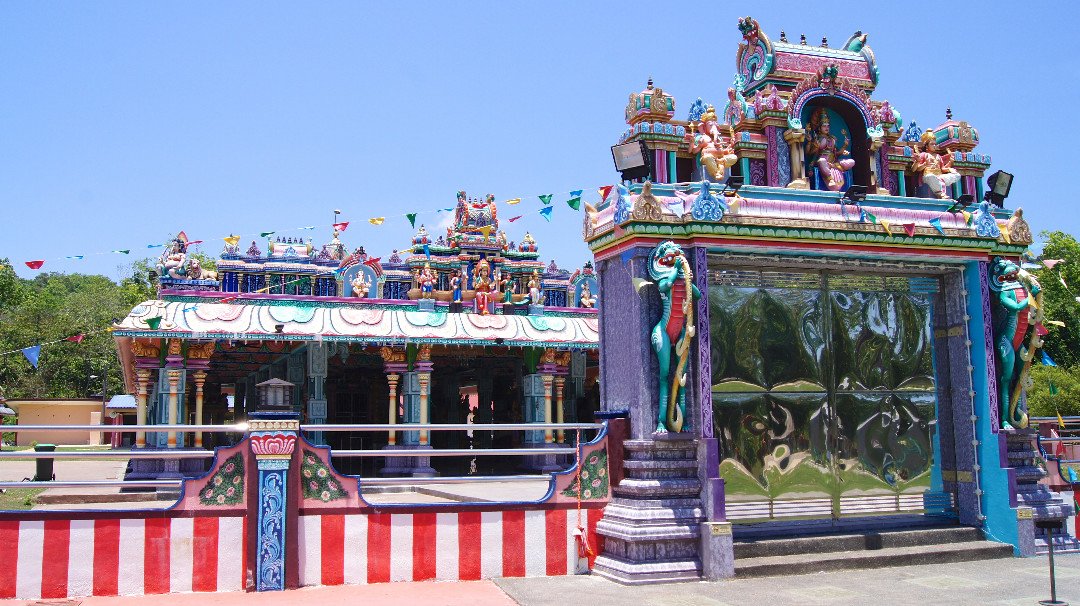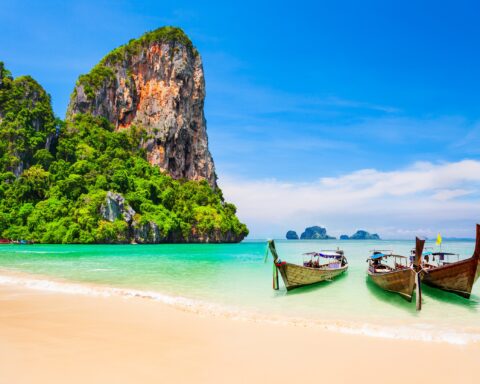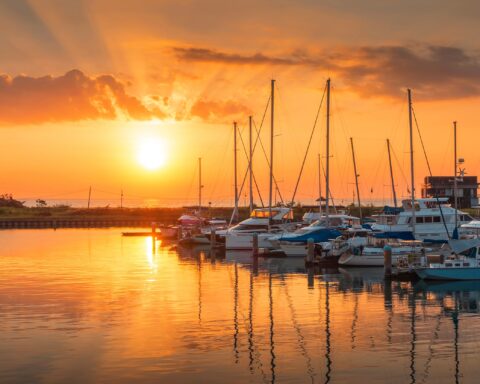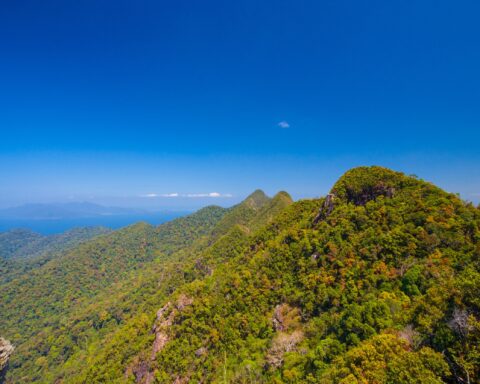Look beyond the resorts and the beaches and you’ll see there’s much more to Langkawi than the images on the front of the tourist brochures. The island’s close proximity to Thailand and the diverse ethnic make-up of Malaysia have resulted in a unique intermingling of cultures and religious beliefs.
Visiting Langkawi’s places of worship can be a fascinating and humbling experience. With Islamic Mosques, Hindu temples and Thai and Chinese Buddhist complexes all within a few kilometres radius, these spiritual places are a testament to how different religions can peacefully co-exist.
Masjid Al-Hana
You’ll spot the golden domes rising from the surrounding palm trees as you approach Al-Hana, the largest mosque in Langkawi. While there are certainly more spectacular mosques elsewhere in Malaysia, Al-Hana’s stained glass windows and Uzbek-inspired wall carvings of Koranic verses are still impressive, and it’s a peaceful, welcoming place to get in touch with Langkawi’s Malay Islamic culture. If you decide to visit, remember to dress appropriately (long sleeves for women and covered legs for both men and women).
Wat Koh Wanararm

Meaning “Lucky Temple”, Wat Wanararm is the biggest and most attractive of the handful of Thai Buddhist temples in Langkawi. Just outside of Kuah town, the Lucky Temple is surprisingly serene and secluded, with landscaped grounds amid a surrounding of lush rainforest. The main hall features a large Buddha statue, and you can wander the grounds among stupas, pagodas, prayer wheels and koi ponds. The highlight is the huge marble statue of Kuan Yin, Goddess of Mercy, which overlooks the temple and appears as if it were carved directly into the hillside.
Sri Maha Marimman Devasthanam
If you’re struggling to pronounce the name of this place, just ask for the Hindu temple on Jalan Ayer Hangat, north of Kuah town near the Gunung Raya Golf Resort. While this quiet place, attended by an Indian priest, is fairly humble as far as Hindu temples go, it’s still a good example of traditional Hindu architecture, with its rainbow-coloured reliefs and statues of various gods. The atmosphere is warm and meditative, with devotees trickling in around the clock to pray and give offerings.
Tean Hou Temple

This ornate Chinese Buddhist temple was completed in 2017 (and is still being added to) but draws inspiration from ancient Chinese architectural styles. The temple honours the deity Mazu, the goddess of the sea. By far the largest and most impressive Buddhist temple on the island, it stands tall at the top of a grand staircase, with intricately carved columns holding up a brightly coloured roof edged by imperial dragons. An often-bustling place, with plans to add an on-site restaurant and cultural centre, the temple is set to become a major venue for Chinese festivals and events throughout the year.
Wat Tham Kisap
This Thai Buddhist temple is located not far from Wat Koh Wanararm on Jalan Air Hangat. The small temple is most notable for its spectacular location at the foot of a limestone cliff. A statue of Hanuman, the Hindu monkey god, guards the entrance, and the prayer hall is surrounded by statues of various animals and mythical creatures including giant cobras, cows, elephants and a sea eagle – the symbol of Langkawi.





